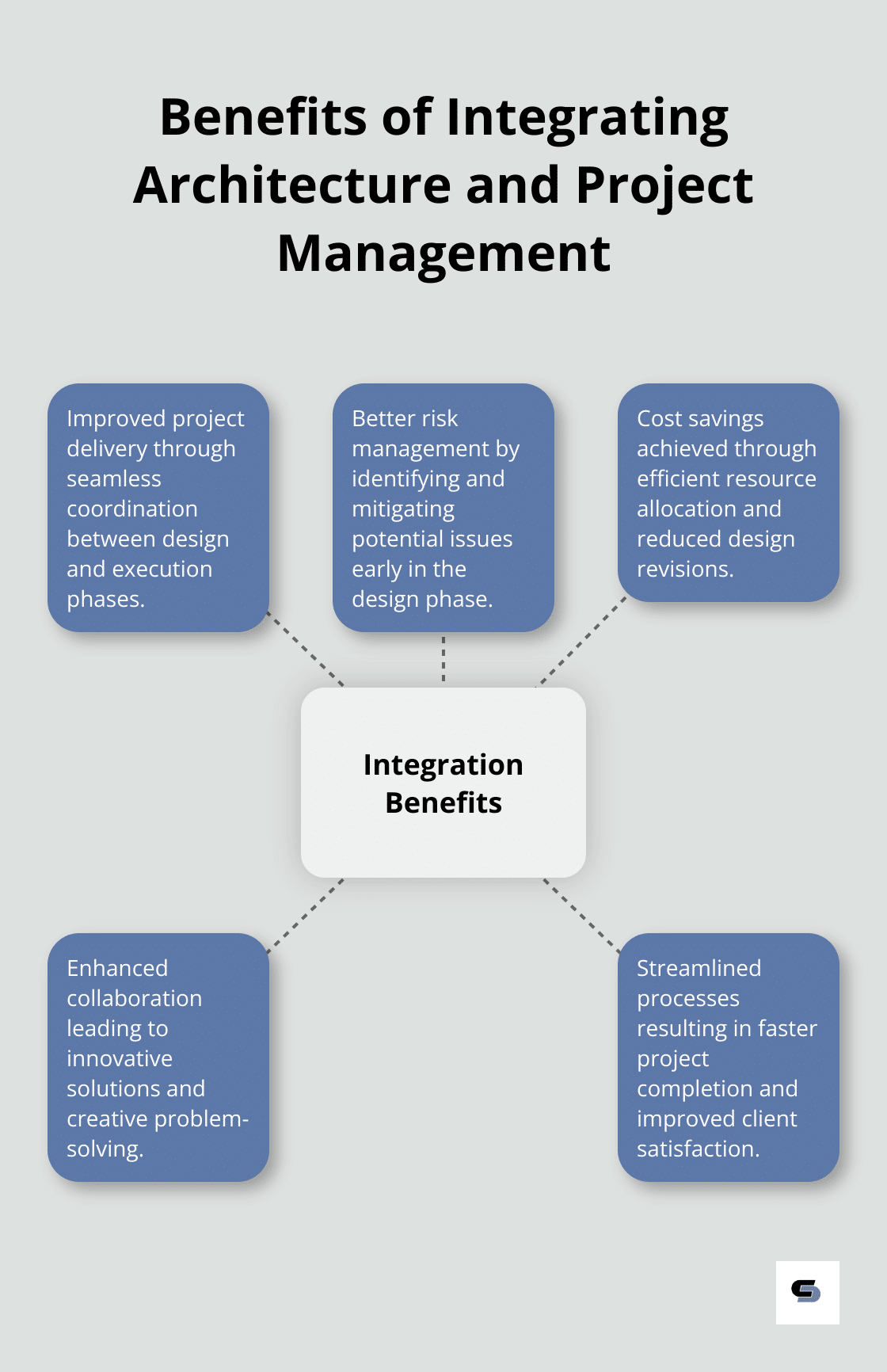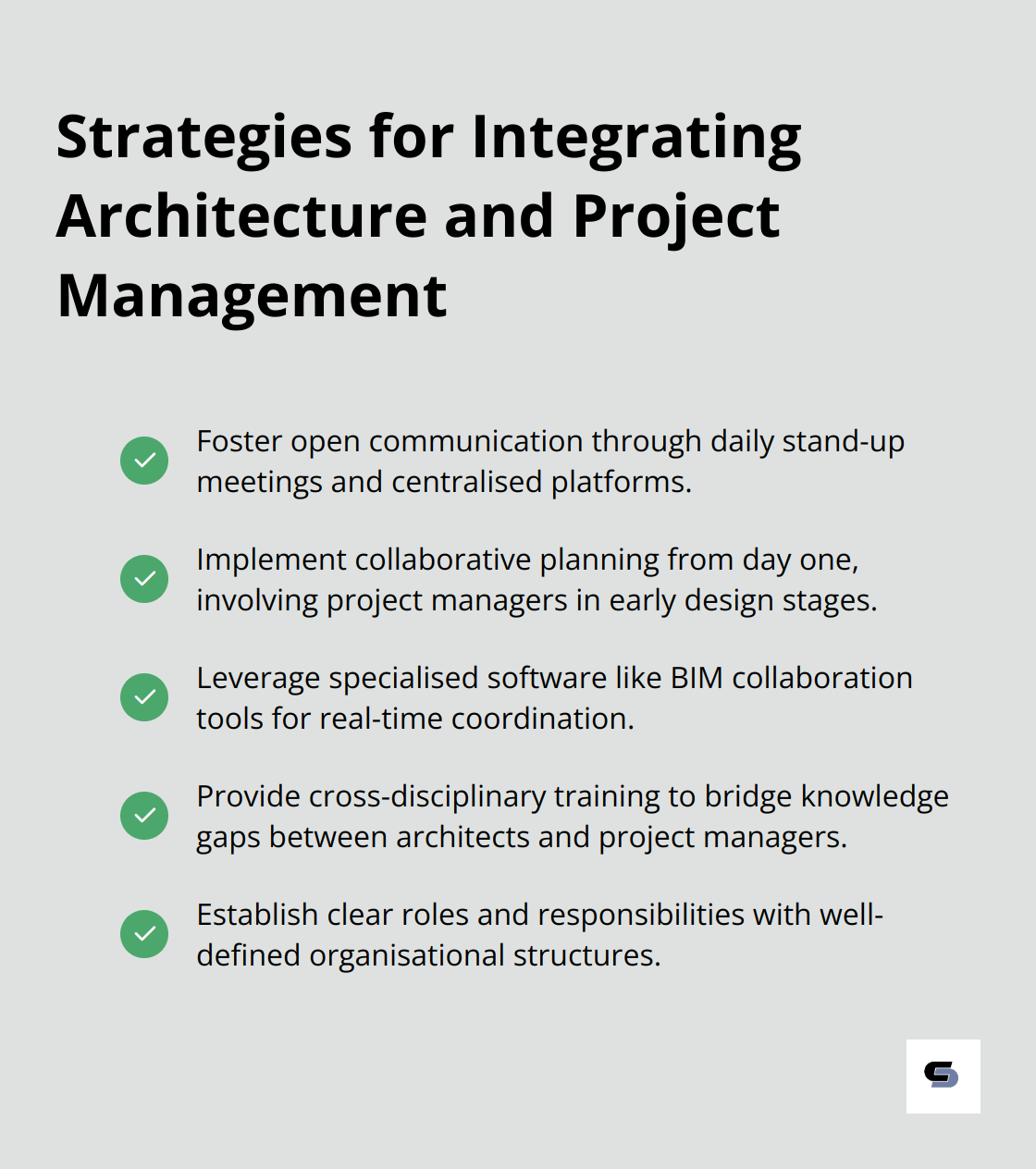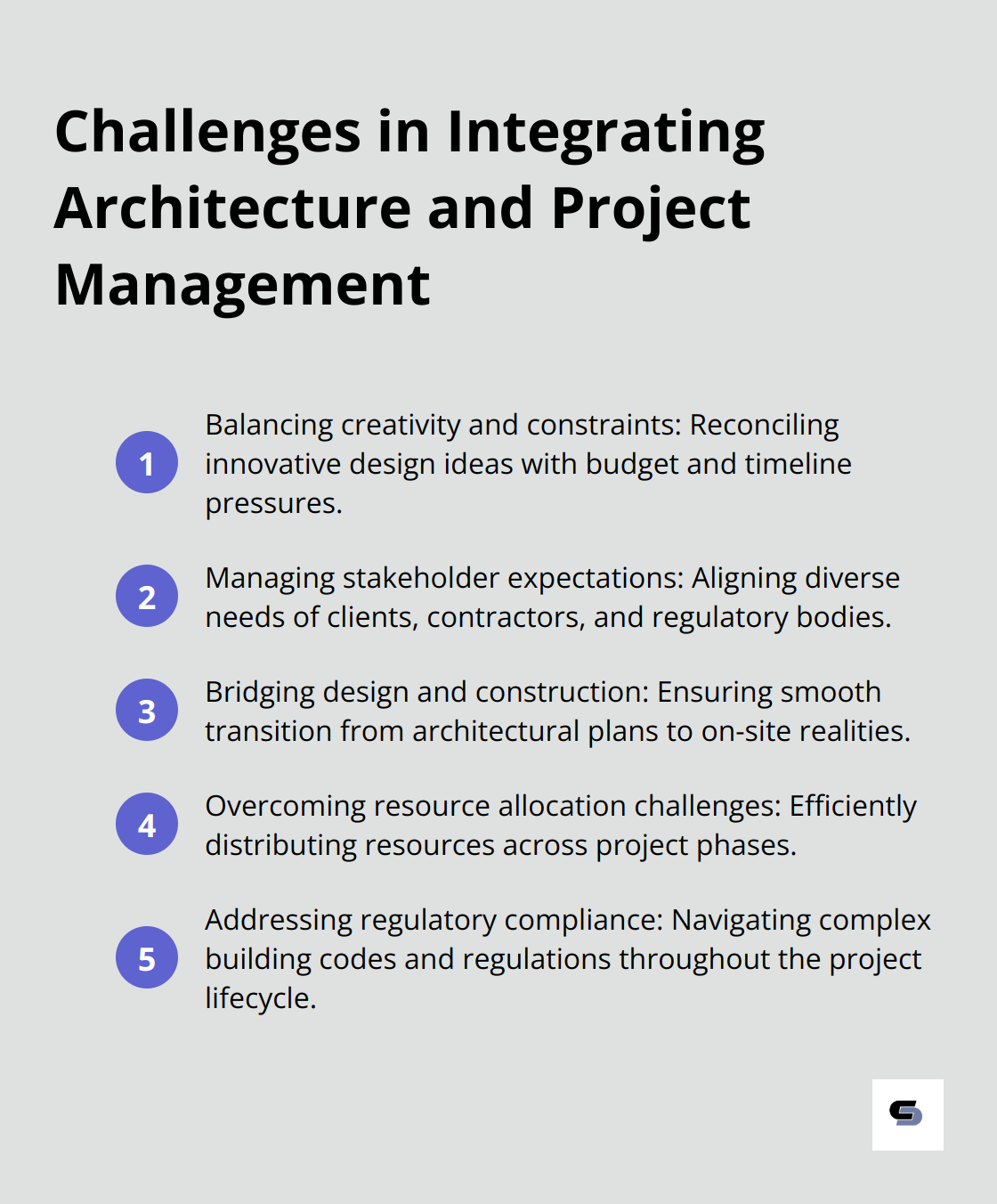How to Integrate Architecture and Project Management
At Cameron Construction, we’ve seen firsthand how integrating architecture and project management can transform the building process.
The synergy between these two disciplines is often underestimated, yet it’s crucial for successful project delivery.
In this post, we’ll explore effective strategies for merging architectural vision with project management expertise, and how to overcome common challenges in the process.
Where Architecture Meets Project Management
The Synergy of Design and Execution
The intersection of architecture and project management creates a powerful synergy that transforms the building process. This convergence isn’t just about combining two disciplines; it’s about creating a seamless process that delivers exceptional results.
Architects and Project Managers: Complementary Roles
Architects are the visionaries who craft designs that transform spaces and enhance lives. Project managers, in contrast, are the pragmatists who turn these visions into reality. While architects focus on aesthetics and functionality, project managers ensure timelines, budgets, and resources align perfectly.
The most successful projects occur when these roles work in harmony. For example, when renovating a heritage home, architects and project managers must collaborate closely. This collaboration results in a stunning blend of modern amenities and historical charm, delivered on time and within budget.
Bridging the Gap: Areas of Overlap
The overlap between architecture and project management is where efficiency thrives. Both roles require strong communication skills, attention to detail, and a deep understanding of the construction process. When architects understand project management principles and project managers appreciate architectural nuances, projects run smoother.
During the planning phase of a multi-storey home expansion, architects and project managers can jointly develop timelines. This collaborative approach ensures that design iterations don’t compromise project deadlines (a common pitfall in less integrated teams).
Measurable Benefits of Integration
Integrating architecture and project management isn’t just a nice-to-have; it’s a game-changer. A study sheds light on the process and logic of alignment between project strategy and business strategy and how this alignment affects different dimensions of project success.
This integration can lead to significant improvements in project delivery. These improvements represent real value delivered to clients.
Moreover, this integrated approach allows for better risk management. By involving project managers early in the design phase, potential issues can be identified and mitigated before they become costly problems.
The Future of Integrated Project Delivery
As the construction industry evolves, the integration of architecture and project management will become increasingly important. New technologies such as Building Information Modelling and virtual reality are already blurring the lines between these disciplines, creating opportunities for even closer collaboration.
The next chapter will explore specific strategies for effective integration, including establishing clear communication channels and implementing collaborative planning processes. These strategies will help architects and project managers work together more seamlessly, ultimately delivering better results for clients.

Practical Strategies for Seamless Integration
Fostering Open Communication
Open communication forms the foundation of successful integration. We recommend implementing daily stand-up meetings where architects and project managers share updates, discuss challenges, and align on priorities. These brief, focussed sessions can reduce misunderstandings and accelerate decision-making processes.
A centralised communication platform stores all project-related discussions, documents, and decisions. This ensures that everyone accesses the same information, reducing the risk of miscommunication and keeping all team members on the same page.
Collaborative Planning from Day One
Efficient project management in construction is key to maximising project ROI. Involving project managers in the early stages of design can transform project outcomes. Joint planning sessions allow architects and project managers to create project timelines, identify potential risks, and establish key milestones together.
This collaborative approach often leads to fewer design revisions and improved adherence to project deadlines. Considering constructability issues during the design phase minimises costly changes during construction.
Leveraging Specialised Software
Investment in project management software tailored for architectural projects can yield significant benefits. BIM collaboration tools like Autodesk Construction Cloud, Trimble Connect, and Navisworks allow for real-time collaboration between architects and project managers.
Such software enables tracking of design changes, management of resources, and monitoring of budgets all in one place. It proves particularly useful for complex projects like multi-storey home extensions (where coordination between different aspects of the project is paramount).
The ability to visualise the project timeline alongside the 3D model helps identify potential conflicts before they become issues on-site.
Cross-Disciplinary Training
Implementing cross-disciplinary training programs can bridge the knowledge gap between architects and project managers. Architects can benefit from learning project management principles, while project managers can gain insights into architectural processes and considerations.
This mutual understanding fosters better collaboration and reduces friction between the two disciplines. It also enables team members to anticipate each other’s needs and challenges more effectively.
Establishing Clear Roles and Responsibilities
While integration is key, it’s equally important to establish clear roles and responsibilities. A well-defined organisational structure (with clear lines of authority and decision-making processes) prevents confusion and ensures accountability.
Regular team meetings to review and adjust these roles as needed can help maintain clarity throughout the project lifecycle. This approach allows for flexibility while maintaining a structured framework for collaboration.
The next chapter will explore common challenges that arise when merging architecture and project management, and provide strategies to overcome these obstacles effectively.

Navigating Project Complexities
Balancing Creativity and Constraints
The integration of architecture and project management presents unique challenges. Budget limitations, timeline pressures, and regulatory requirements often conflict with innovative design ideas.
Early collaboration between architects and project managers proves essential. Involvement of project managers in the conceptual design phase helps identify potential constraints early. This approach allows teams to work creatively within these limitations. For example, when designing a multi-storey home extension, architects and project managers might explore cost-effective materials that achieve the desired aesthetic, or find innovative ways to phase construction to meet timeline requirements.
Value engineering techniques optimise designs without compromising quality or aesthetics. This systematic method aims at improving the value of a project by optimising its function while reducing costs. This process might involve material substitutions, simplification of complex design elements, or discovery of more efficient construction methods. Constraints should be viewed as opportunities for creative problem-solving rather than limitations.
Managing Stakeholder Expectations
Stakeholder management forms a critical aspect of successful project integration. Clients, contractors, regulatory bodies, and internal team members often have differing (and sometimes conflicting) expectations.
Clear and frequent communication is paramount. A structured communication plan that includes regular stakeholder meetings, progress reports, and a centralised platform for sharing updates ensures all parties align on project goals, timelines, and potential challenges.
Education plays a vital role. Taking time to explain the intricacies of the design and construction process to clients helps them understand the reasons behind certain decisions or timelines. This proactive approach often prevents misunderstandings and builds trust.
Bridging Design and Construction
The transition from design to construction can be particularly challenging. discrepancies between architectural plans and on-site realities can lead to delays, cost overruns, and frustration for all involved.
A design-build approach on many projects keeps architects involved throughout the construction phase, allowing for quick resolution of any issues that arise. It also enables constructability reviews during the design phase, where experienced builders provide input on the practicality and efficiency of proposed designs.
Technology plays a key role in this process. Building Information Modelling (BIM) creates detailed 3D models of projects. These models serve as a single source of truth for all stakeholders, reducing errors and facilitating better coordination between design and construction teams. Current trends, benefits, possible risks, and future challenges of BIM for the AEC industry are being actively discussed and researched.
Overcoming Resource Allocation Challenges
Efficient resource allocation presents another significant challenge in integrating architecture and project management. The dynamic nature of construction projects often requires flexibility in resource distribution.
implementation of resource management software helps track and allocate resources effectively. This technology allows project managers to visualise resource utilisation across different project phases and make data-driven decisions about allocation.
Cross-training team members in both architectural and project management skills creates a more versatile workforce. This approach allows for smoother reallocation of resources when unexpected challenges arise.
Addressing Regulatory Compliance
Navigating the complex landscape of building codes and regulations requires close collaboration between architects and project managers. Staying up-to-date with changing regulations and ensuring compliance throughout the project lifecycle presents ongoing challenges.
Creation of a dedicated compliance team (or assigning this responsibility to specific team members) ensures that regulatory requirements receive proper attention. Regular training sessions keep the team informed about the latest regulatory changes and their implications for ongoing projects.
Utilisation of compliance management software streamlines the process of tracking and documenting regulatory adherence. This technology helps identify potential compliance issues early in the project, allowing for proactive resolution.

Final Thoughts
The integration of architecture and project management transforms the entire building process. This synergy leads to smoother project execution, improved client satisfaction, and better overall outcomes. Modern construction projects demand this integrated approach to handle complex challenges, meet tight deadlines, and navigate budget constraints effectively.
Emerging technologies will further blur the lines between architecture and project management, offering new opportunities for efficiency and innovation. We anticipate more architectural firms will adopt agile methodologies to enhance flexibility and responsiveness in construction projects. The future of construction lies in collaborative approaches that leverage the strengths of both architects and project managers.
At Cameron Construction, we strive to deliver exceptional home renovations and extensions that meet and exceed our clients’ expectations. Those who effectively merge architectural vision with project management expertise will thrive in an increasingly competitive landscape. The integration of architecture and project management (not just a trend, but a necessity) will continue to shape the future of the construction industry.






